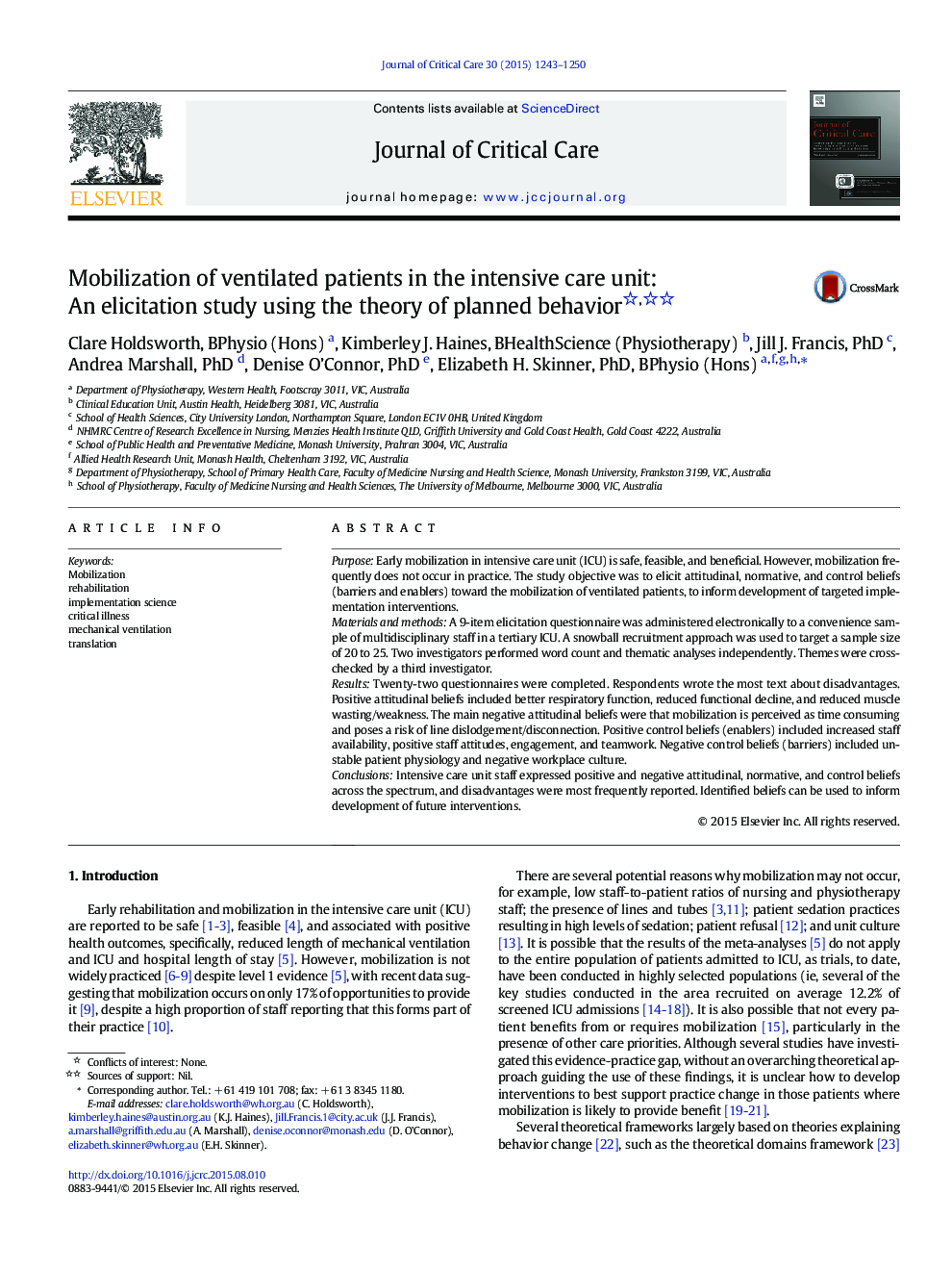| کد مقاله | کد نشریه | سال انتشار | مقاله انگلیسی | نسخه تمام متن |
|---|---|---|---|---|
| 5885204 | 1567681 | 2015 | 8 صفحه PDF | دانلود رایگان |

PurposeEarly mobilization in intensive care unit (ICU) is safe, feasible, and beneficial. However, mobilization frequently does not occur in practice. The study objective was to elicit attitudinal, normative, and control beliefs (barriers and enablers) toward the mobilization of ventilated patients, to inform development of targeted implementation interventions.Materials and methodsA 9-item elicitation questionnaire was administered electronically to a convenience sample of multidisciplinary staff in a tertiary ICU. A snowball recruitment approach was used to target a sample size of 20 to 25. Two investigators performed word count and thematic analyses independently. Themes were cross-checked by a third investigator.ResultsTwenty-two questionnaires were completed. Respondents wrote the most text about disadvantages. Positive attitudinal beliefs included better respiratory function, reduced functional decline, and reduced muscle wasting/weakness. The main negative attitudinal beliefs were that mobilization is perceived as time consuming and poses a risk of line dislodgement/disconnection. Positive control beliefs (enablers) included increased staff availability, positive staff attitudes, engagement, and teamwork. Negative control beliefs (barriers) included unstable patient physiology and negative workplace culture.ConclusionsIntensive care unit staff expressed positive and negative attitudinal, normative, and control beliefs across the spectrum, and disadvantages were most frequently reported. Identified beliefs can be used to inform development of future interventions.
Journal: Journal of Critical Care - Volume 30, Issue 6, December 2015, Pages 1243-1250